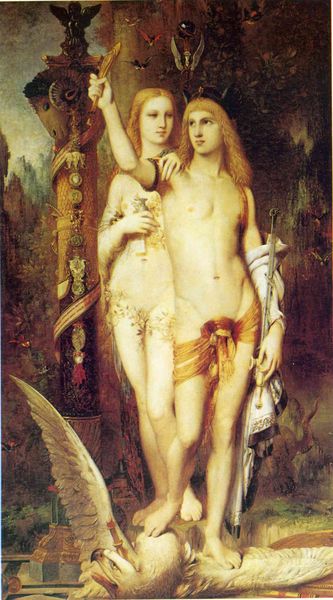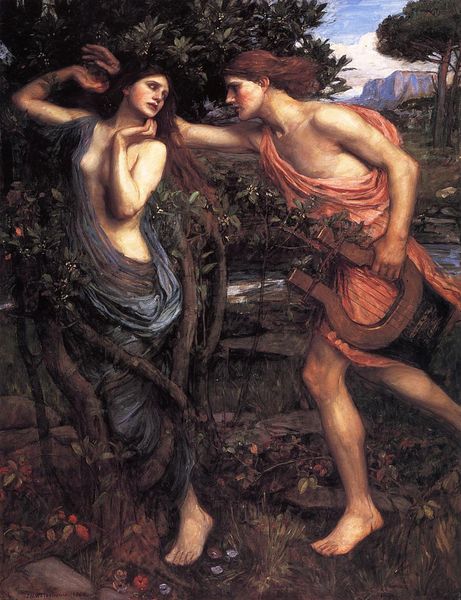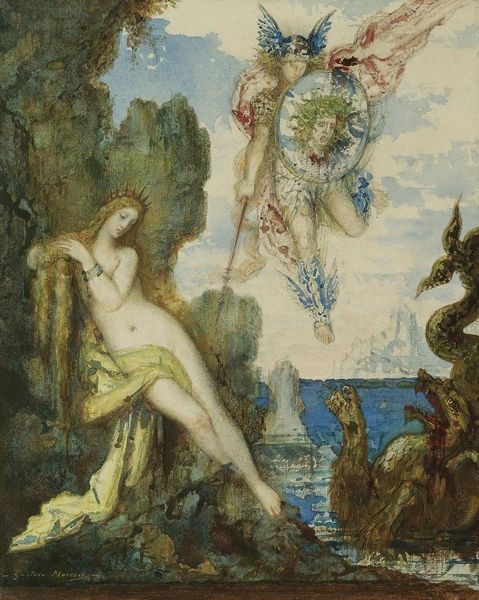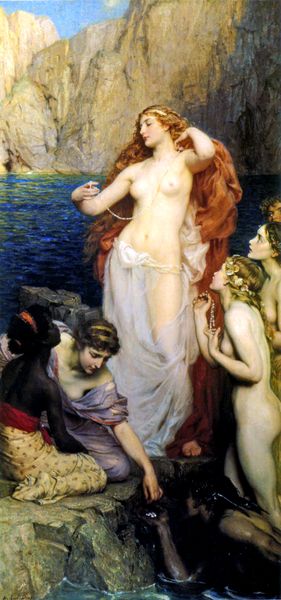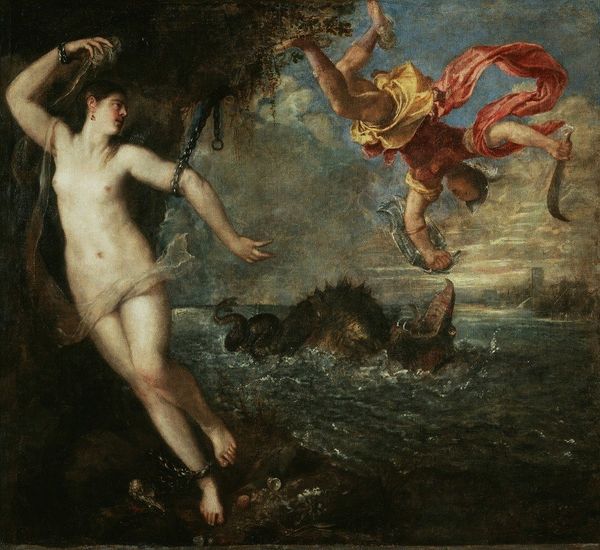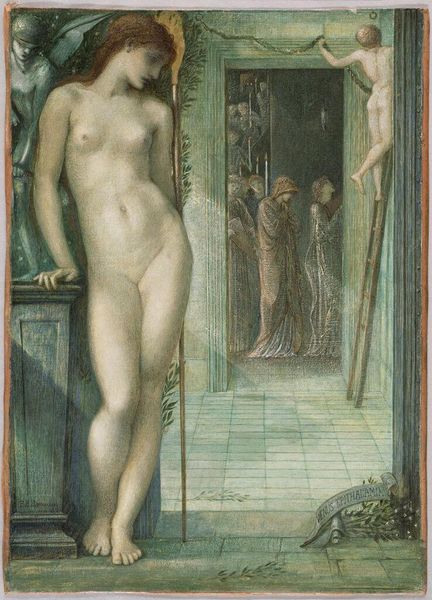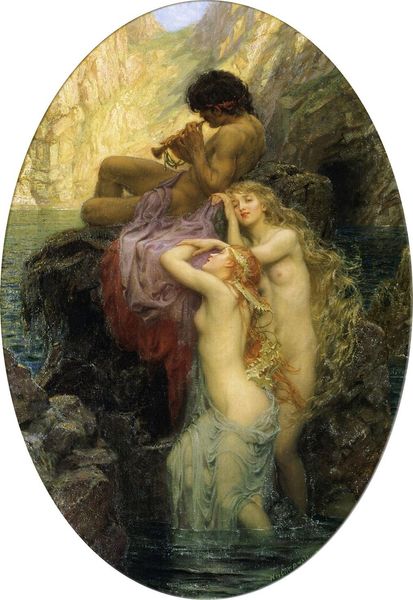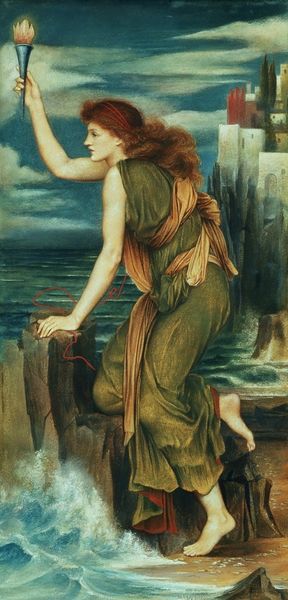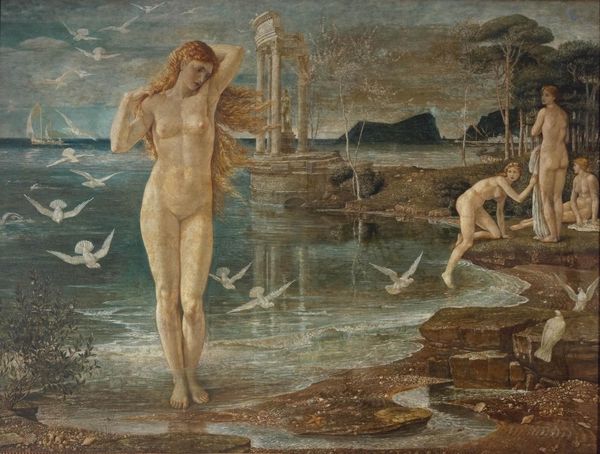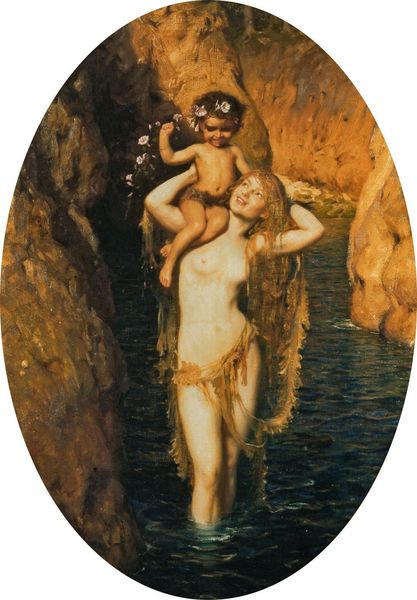
Copyright: Public domain
Edward Burne-Jones painted "The Rock of Doom", an oil on canvas, depicting a scene laden with symbolic weight. We see Perseus, still wearing his helmet, and Andromeda chained to a rock awaiting her fate. The most striking motif is the chained figure, an image resonant with vulnerability and sacrifice. Andromeda's pose echoes that of countless figures across time, from religious martyrs to classical nymphs. This motif transcends Burne-Jones' canvas, reappearing in Botticelli's Venus, each tied to their fate yet embodying a deep, subconscious yearning for release. The image of a chained woman has evolved, shifting from religious martyrdom to secular expressions of oppression. The chains and rock serve not only as literal restraints but also as visual metaphors for societal and psychological constraints. The act of freeing someone, whether from literal chains or metaphorical bonds, engages viewers on a deep, subconscious level, reflecting our collective memory and the ever-present human desire for liberation. It is this cyclical progression that reveals how symbols resurface, evolve, and take on new meanings in different historical contexts.
Comments
No comments
Be the first to comment and join the conversation on the ultimate creative platform.
